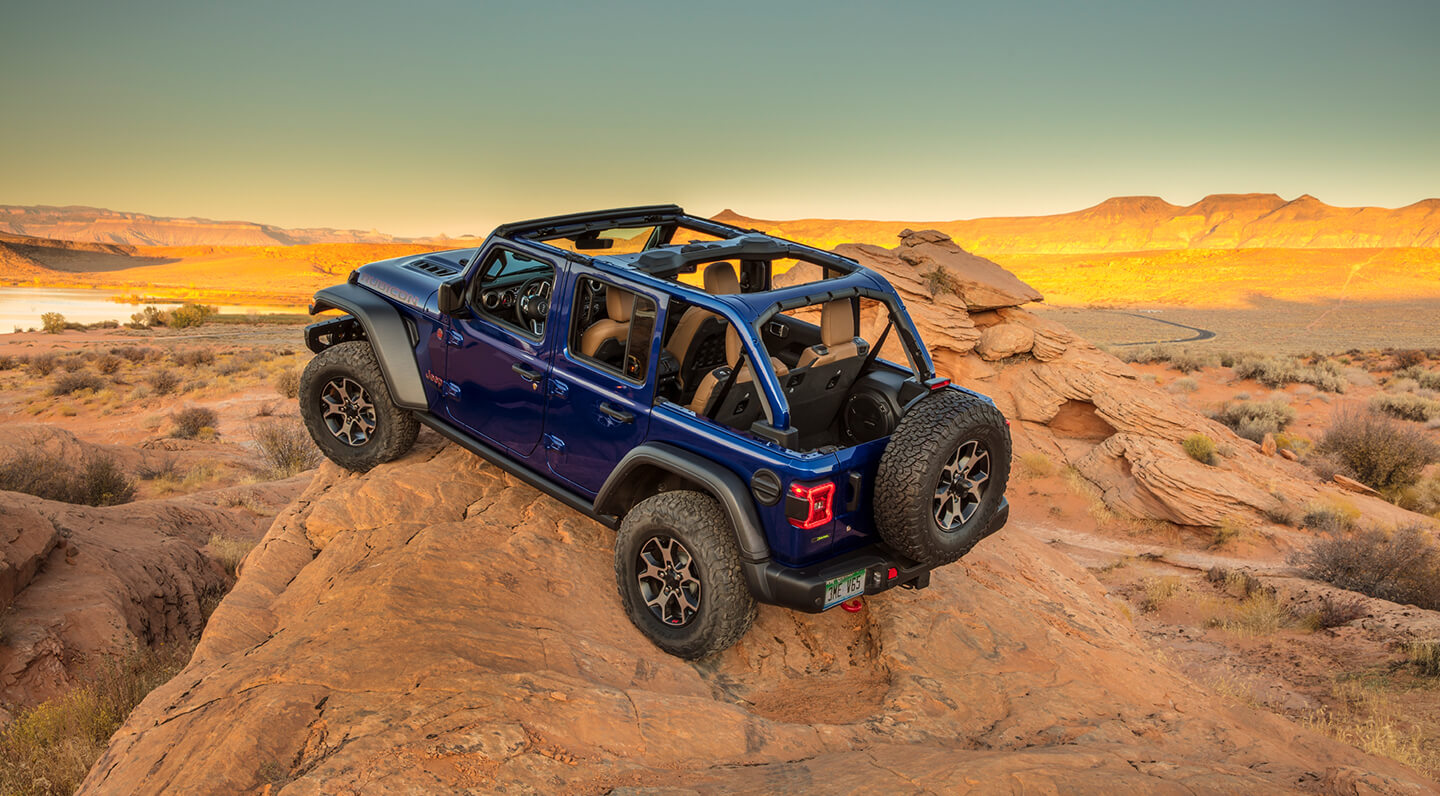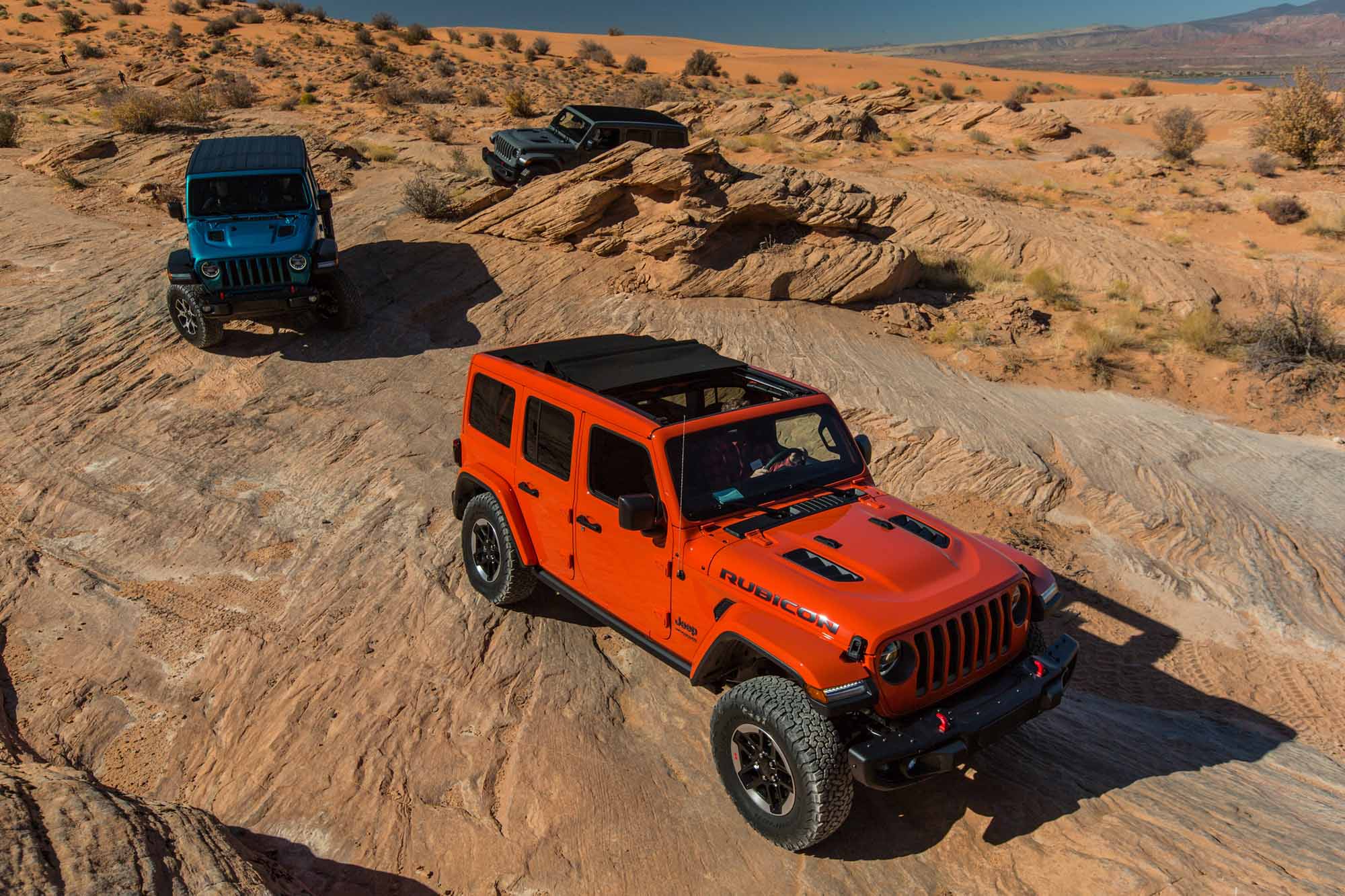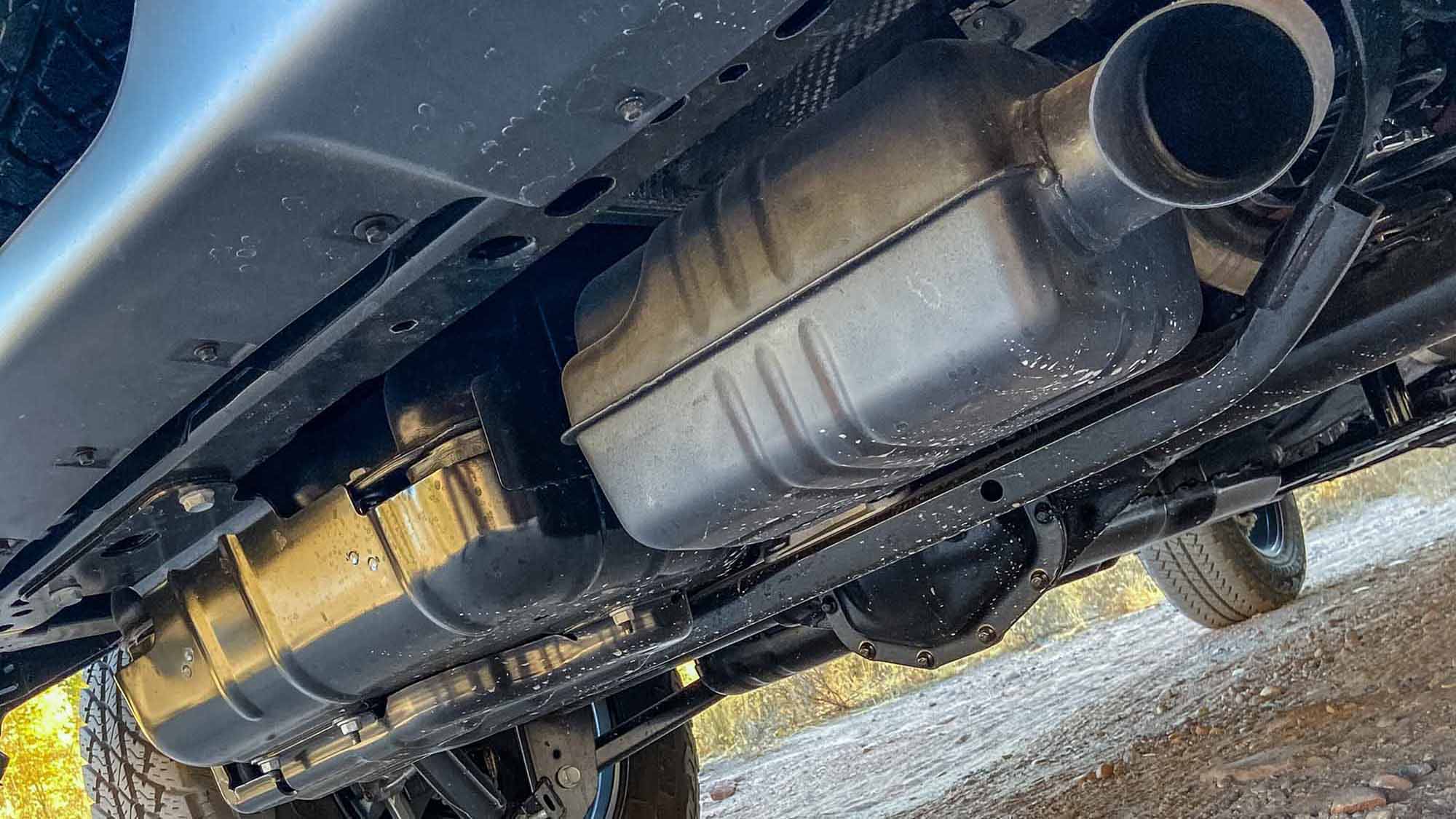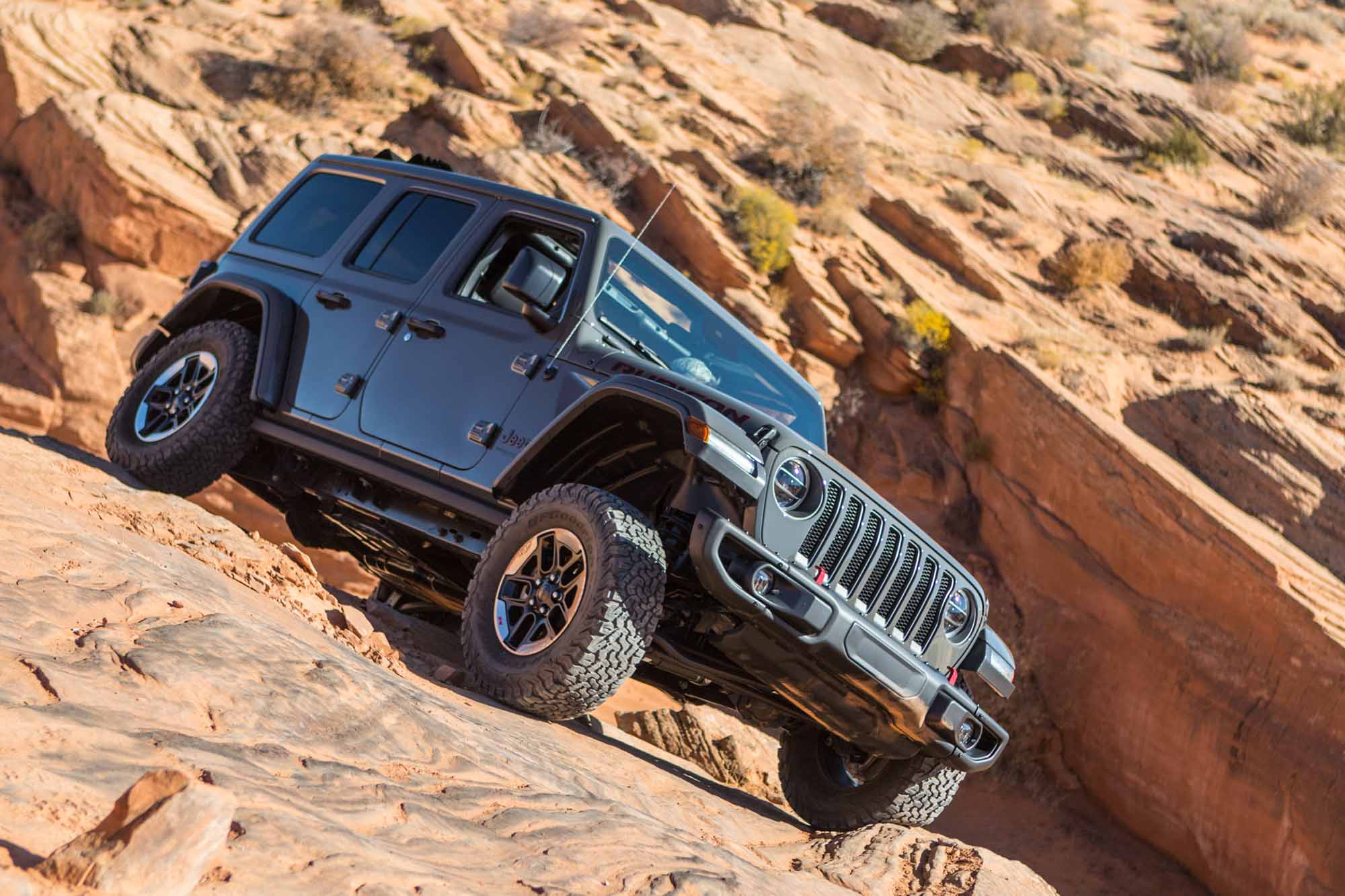
Every year when writing to Santa, Jeep enthusiasts have asked for the same two things: a pickup and a diesel engine. Even if you don’t believe in old Saint Nick, Jeep has delivered. First, Jeep came through with the Gladiator. Now, they are offering the 3.0L V6 EcoDiesel in the Jeep Wrangler JL. And, if that wasn’t enough, a diesel Gladiator will make its debut as a 2021 model.
We had the opportunity to spend the day in the new diesel JL recently in Zion National Park. And, we were able to put it through its paces off-road at Sand Hollow Recreation Area. The EcoDiesel makes 260 horsepower and pumps out 442 ft-lbs of torque, making it the most torque ever offered in a Wrangler. Lots of torque is always a good thing in the dirt. But was the new diesel Jeep JL worth the long wait? Read on to find out.



The Engine
The EcoDiesel engine isn’t “new” per se, but rather new to the Wrangler. The backstory is that VM Motori initially developed the engine with GM for use in the Cadillac CTS. When GM went bankrupt in 2009, they abandoned the project. But VM Motori had already tooled up for the engine leaving it without a home. It just so happens that Jeep’s parent company Fiat owns half of VM Motori. So the engine made its way into the Ram 1500 and Jeep Grand Cherokee starting in 2014. The Gen3 EcoDiesel in the Wrangler is still a 60-degree V6 with a stout compacted graphite iron (CGI) block, forged steel rods and crankshaft, and an aluminum cylinder head with dual overhead cams.
The diesel weighs approximately 400 pounds more than the V6 or turbo four-cylinder engine requiring revised spring rates and shock tuning. “This engine isn’t a twin of the Gen2 or even a brother,” explained FCA diesel engineer Mauro Puglia explained. “They are more like cousins.” Like the Pentastar gasoline engine, the alternator on the EcoDiesel is located up high and backward to increase water-fording ability. This created a domino-effect where the other accessories, including the injection pump, had to be relocated as well. The turbocharger uses variable geometry and low friction bearings to spool quickly and allow for a broad powerband. In addition to being oil-fed, the turbo is also water-cooled for increased reliability.
The EcoDiesel has the usual host of emission add ons like DEF (Diesel Exhaust Fluid), EGR (Exhaust Gas Recirculation), SCR (Selective Catalytic Reduction), and DPF (Diesel Particulate Filter). Unlike the high-pressure EGR system of the Gen2 EcoDiesel, the Gen3 engine in the Wrangler uses a low-pressure EGR located after the DPF. This means it doesn’t rob any energy from the turbocharger like the prior EGR system. The DEF tank is located behind the rear axle and protected by a skid plate to keep it safe from harm.
The Platform
Jeep sold 240,000 JLs last year, and it is easy to see why. The newer JL takes the strong points of the JK and improves upon them. The Wrangler still has a fully boxed frame, coil suspension, and solid axles front and rear that enthusiasts love. And, it is still the only 4×4 vehicle on the market with a removable top. But the JL is over 200 pounds lighter, the interior is improved, the brakes are larger, and the turning radius is tighter, to name a few of the improvements. All of this makes a more refined Jeep that’s nimbler on the pavement and the trail.
Mechanically the rear axle of the JL uses larger, thicker axle tubes than the JK as well as a larger ring gear (8.66-inches instead of 8.26 inches). For some puzzling reason, this is still called a “Dana 44”, but it isn’t your daddy’s Dana 44. The most significant mechanical improvement for the JL, though, is the TorqueFlight 8HP75 eight-speed automatic transmission. The beefy automatic has a low 4.71:1 first gear and overdrives in the last two speeds with the tallest gear being 0.67:1. This is the only transmission available with the EcoDiesel, and it has been beefed up to handle the extra torque. As much as we love rowing our gears, we would opt for the automatic behind this engine even if a manual option was available. The extra gears of the eight-speed always keep the engine in the fat part of the powerband.

The Combination
We had high expectations for 442 ft-lbs of torque in the new Wrangler, but our initial impression was a little underwhelming. It isn’t that the EcoDiesel is slow, there is just a lag before the torque pushes you back in the seat. Rather than a condemnation of the diesel, this is praise for the Pentastar gasoline engine and eight-speed automatic. Despite all that added torque, the diesel Wrangler has the same 3,500-pound tow rating as the gasoline-powered JL. We expect the diesel to tow better, but the rating is a function of the chassis and suspension rather than the engine.
The EcoDiesel is only available in the four-door JL, but in all trim levels from Sport to Sahara to Rubicon. Expect to pay about $4,500 extra for the diesel option with the least expensive diesel being a Sport at $39,290. All come with 3.73 gears to keep the RPMs down and improve mileage. While the added torque is excellent on the trail, mileage is the most significant selling point for the EcoDiesel, in our opinion. It provides 30% better fuel economy than the Pentastar gasoline engine. Combined with the 18.5-gallon fuel tank, the diesel JL has a range of over 500 miles. And even better, the five-gallon DEF tank only needs to be filled every 10,000 miles! Are you changing your oil? Might as well top off the DEF.
Since the EcoDiesel has been offered in Ram trucks and Jeep Grand Cherokees since 2014, there are already a host of aftermarket programmers from Banks, Diablosport, and Superchips available. We expect similar products that add up to 40 horsepower and 60 foot-pounds of torque available for the diesel Wrangler soon. And current JL suspension, axle, and armor products are all compatible with the new diesel-equipped Jeep.



2